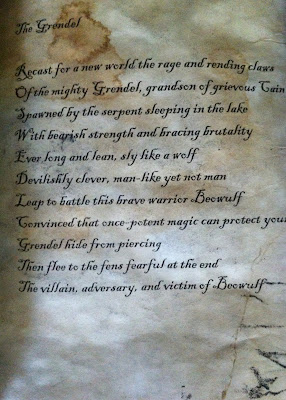Kong-blogging, essay 14 of 15 blog entries on
Skull Island in King Kong (1933)
Ten Amazing Shots from King Kong
Amaze me. Show me things
I’ve never seen before.
Watching King Kong
(1933), audiences were pummeled by image after image unlike anything they’d ever
seen before. Many of these images still
appear startlingly original.
In order to achieve the following ten amazing shots, Willis
O’Brien and his technicians, ably assisted by the set designers and
cinematographers, used every trick known in the book. These images
include stop-motion animation, rear projection, matte paintings on glass, the
Dunning process, traveling mattes, and various optical printer effects.
Often there are layers upon layers of visual effects combining to create the
final composition.
1. Kong by the Stream
Kong quickly moves through this idyllic scene. Willis
O’Brien liked to incorporate water into his shots and so he matted a stream into the foreground. It’s there simply to create a lovely composition.
2. The Dying Stegosaurus
As the ship’s crew walks past the dying Stegosaurus, the
audience gets an opportunity to see Marcel Delgado’s awesome Stegosaurus model from
close up. Look at the wonderful textural details on the body! For
this shot, the crew is in the foreground (walking on a treadmill) and the
dinosaur is rear-projected. The easy way out for O’Brien would have been
to track along the unmoving dead body of the Stegosaurus, but that’s not what
he does. O’Brien animates the final twinges of the dying animal, climaxing
with the magnificent tail movements at the end.
3. Kong Approaches the Log
Here’s a wonderful choice for camera positioning, keeping
the sailors fully visible as they panic at Kong’s approach.
4. Kong Above, Lizard Below
Danger below and danger above, revealed through a tricky upward tilt of the camera. Once again, Willis O’Brien sacrifices ease
because he’s determined to go for the impressive effect. Camera movements
like this are exceedingly difficult to achieve when you’re essentially working
with an animation sandwich—animated lizard below and animated Kong above with a
live-action oval of film plugged in between.
5. Allosaurus in Close Proximity
Many monster movies since have shown dinosaur and human
together, but this shot remains unrivaled. The direction of the
actors is fantastic in scenes like this, as their reactions maintain the
conviction that humans and monsters are truly interacting.
6. The Fall
By this point, the viewer may subconsciously realize that the film employs these over-the-shoulder camera shots to draw us into the
action. But nobody could possibly expect that the camera would hold
position as the tree falls, allowing us to share Ann Darrow’s dizzying
vertiginous descent.
7. A Scavenger
Jack Driscoll walks by the dead Allosaurus and we’re treated
to all sorts of bonus details. Blood drips from the monster’s jaws and a
giant bird perches vulture-like on his head, nervously flying off when Driscoll
gets too close. We assume he’ll be back.
8. Kong’s Lair
There’s movement going on all over the place in Kong’s lair,
with lots of micro-images seamlessly pasted together to create the whole.
Ann Darrow is on the ledge on the left, Jack Driscoll is sneaking around a rock on the
right, there’s bubbling lava in the foreground, steam rising from the lake in
the middle, beautiful matte paintings on glass contributing to the illusion of
depth, and, of course, Kong battling at the center of it all.
9. Skull Island Panorama
Our eyes are naturally focused on Ann and Driscoll making
their getaway. Who’s bothering to look at the background? But check
it out—in the distance, we can see the Great Wall of the native village, the
peninsula where the natives live, the shore where the crew landed, and even the
ship out in the water at far left.
10. Kong at the Gate
There’s an epic crowd scene in the foreground, panic
everywhere, and then the magnificent reveal of Kong as he smashes the doors open. I wonder if they switched to the 24-inch Kong at this point
(the larger model that was built for use in the Manhattan scenes)? Kong looks bigger,
angrier, and more powerful than at any point before. It’s a sight that
must have made audiences gasp in 1933 and still remains powerful today.
Reference Sources
The Making of King Kong by Orville Goldner and George E. Turner
Living Dangerously: The Adventures of Merian C. Cooper by Mark Cotta Vaz
Willis O'Brien: Special Effects Genius by Steve Archer
Dinosaurs Past and Present, Volume 1, Natural History Museum of Los Angeles County
Dinosaurs Past and Present, Volume 2, Natural History Museum of Los Angeles County
Charles R. Knight: The Artist Who Saw Through Time by Richard Milner
All in the Bones: A Biography of Benjamin Waterhouse Hawkins by Valerie Bramwell and Robert M. Peck
Special features on the two-disc special edition, King Kong (1933) by Warner Home Video Inc.
... and an occasional sneak glance at Wikipedia entries (but always double-checking everything!)
Watch King Kong...
Purchase a
King Kong DVD or Blu-Ray set at
Amazon or
Barnes & Noble.
Rent
King Kong at Netflix or other rental service.
© 2012 Lee Price



























































